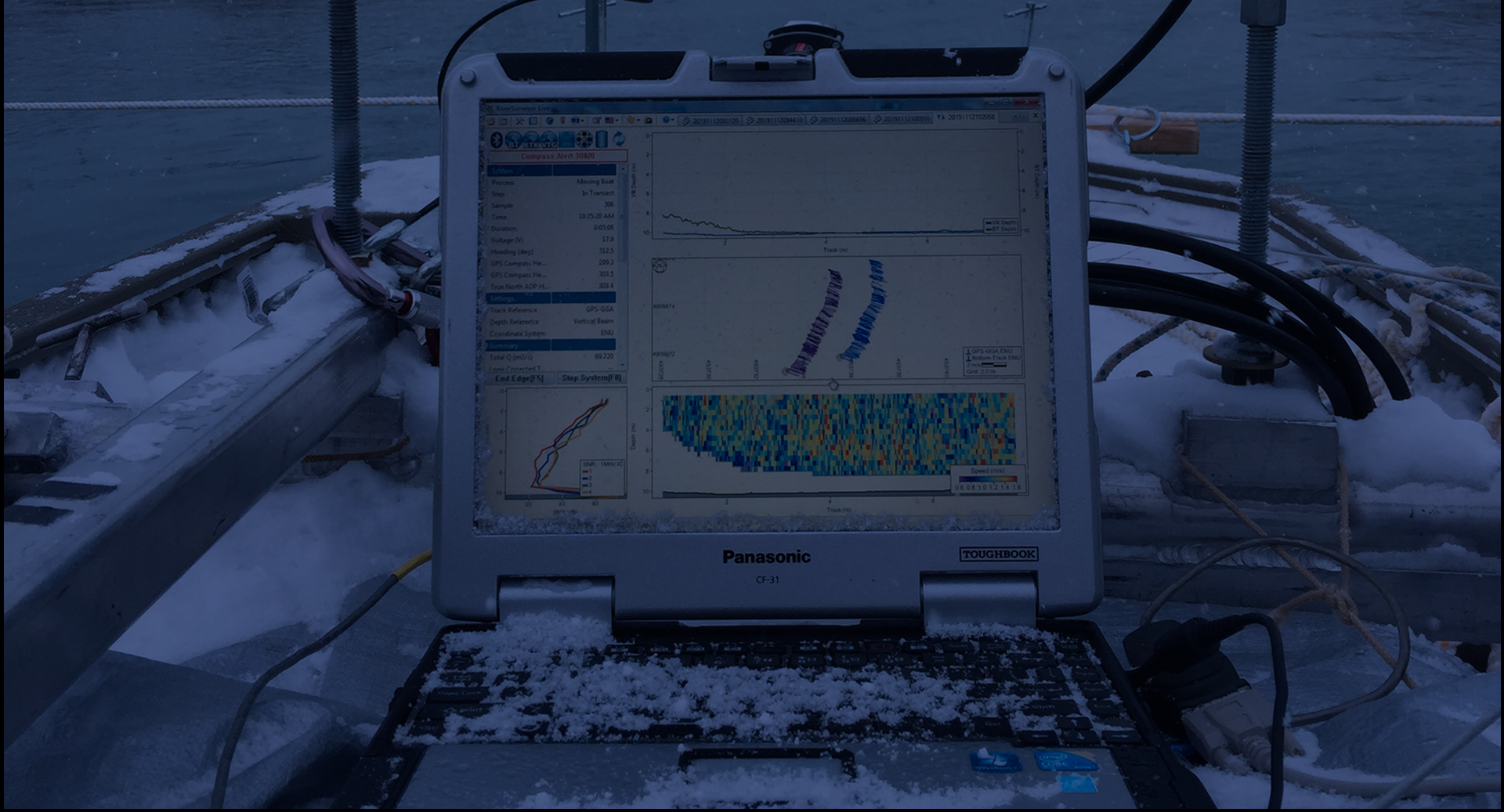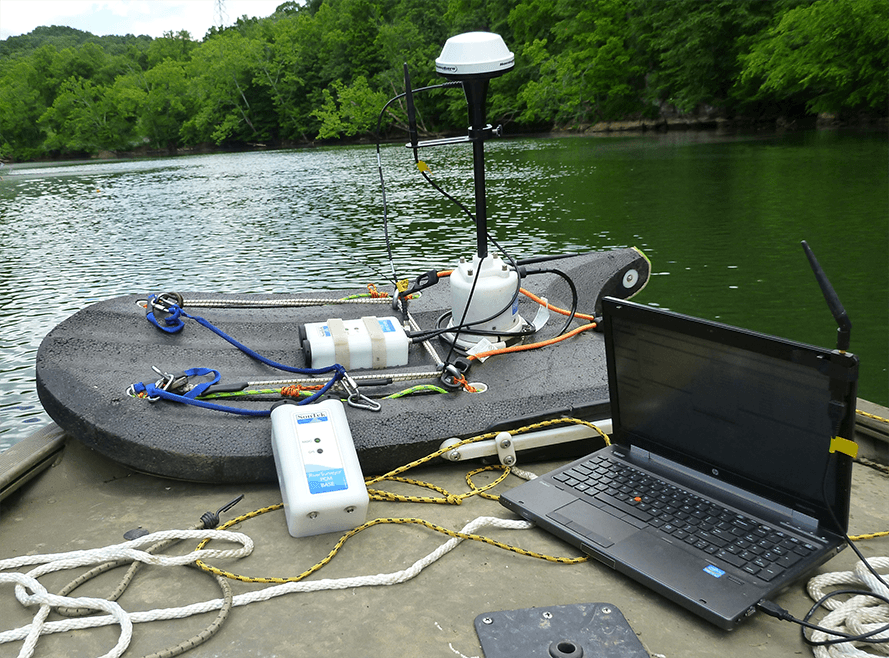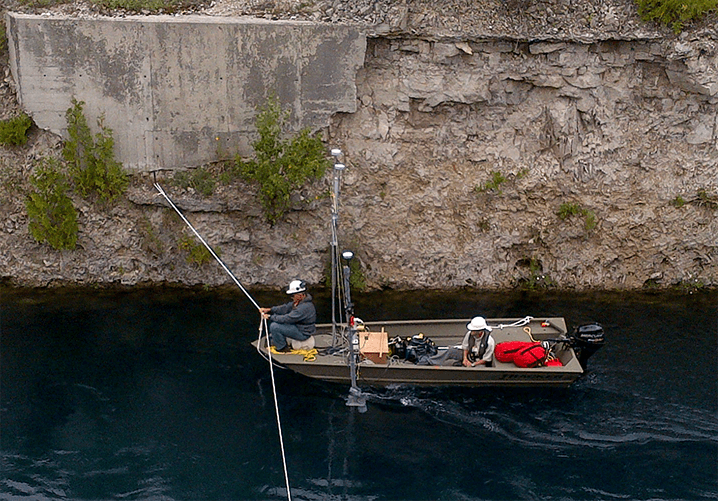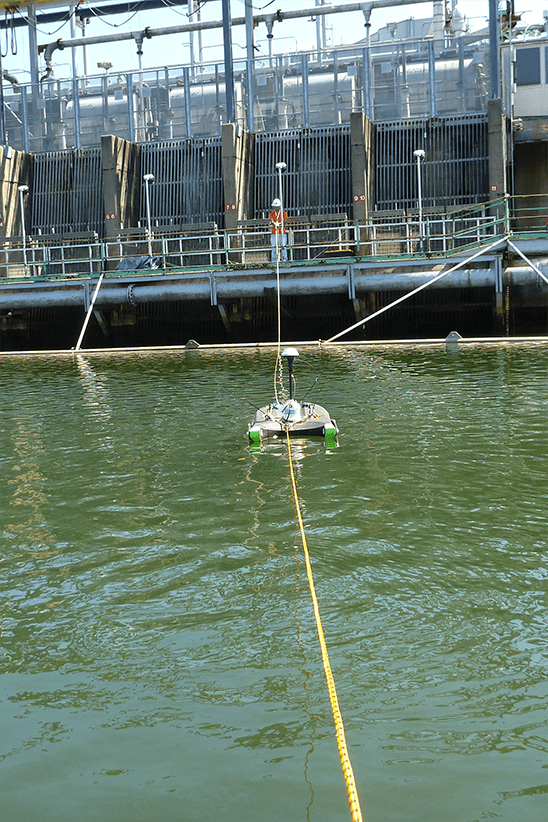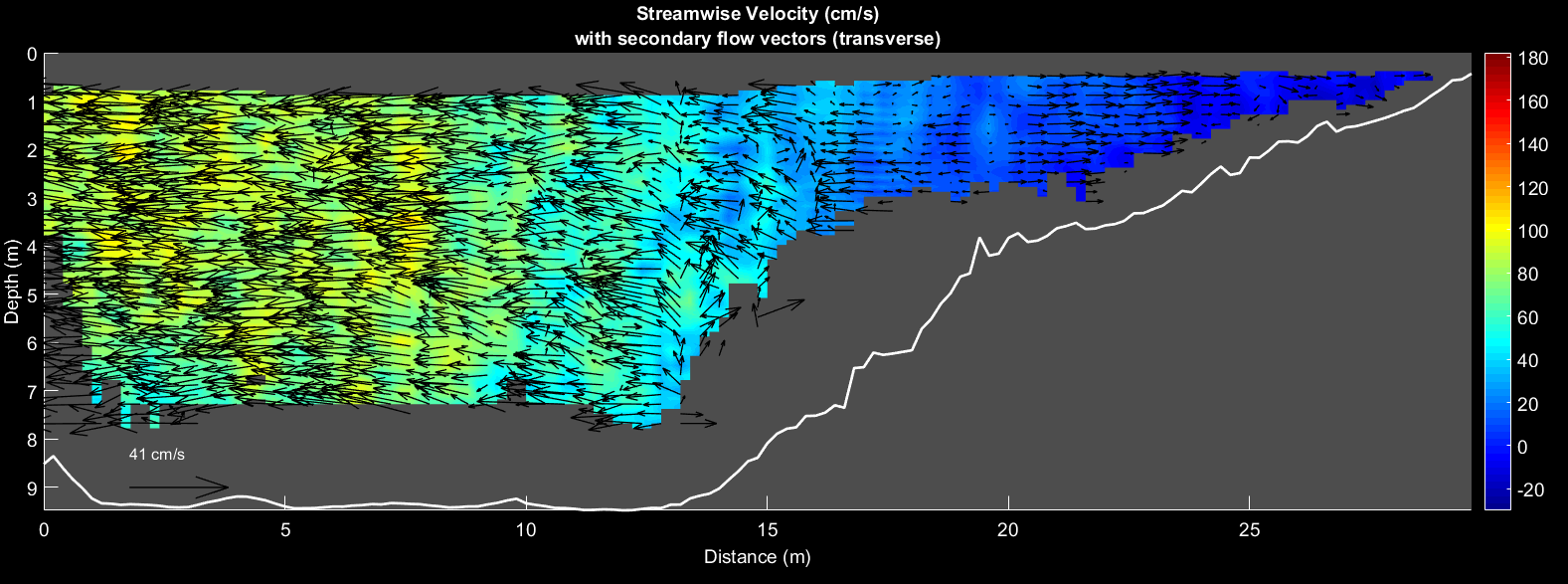The speed (velocity), depth stratified flow direction and total flow volumes can be measured within rivers, streams and open channels (for example, cooling water Intake forebays) using a Mobile Acoustic Doppler Current Profiler (ADCP) system.
This type of information is important for;
- Identifying areas where flow exceeds the critical approach velocities for fish (i.e. fish passage design or assessing fish impingement risk)
- Identifying areas of potential bottom scour and/or sediment deposition (i.e. accumulation of mussel shells).
- River stage monitoring and flood risk assessment.
- Ensuring Permit to Take Water (PTTW) compliance for heavy industry, mining and electricity producers where cooling-water intake is required.
- Modelling fish egg and larval fish dispersal in lakes and rivers where cooling-water intake entrainment is a risk.
Our ADCP survey method follows closely the USGS standardized survey protocols for ADCP water velocity surveys using a moving boat (Mueller et al. 2014).
We use The SonTek RiverSurveyor M9 ADCP SYSTEM. It is a rugged and easily deployed ADCP survey system that can be used in shallow-water applications to provide estimates of discharge and vertically binned flow velocity throughout the water column. The system uses a 4-beam 1 MHz and 3 MHz transducer array to track particulate matter through the beams for estimating Doppler shift.
The RiverSurveyor M9 system can either be deployed on a “boogie Board” (and operated using wireless remote control) or deployed from a small boat using a wired configuration. Working from a small boat allows us to integrate our RTK GNSS derived heading data to ensure accurate compass azimuth information even at those sites where electro-magnetic interference is severe.


